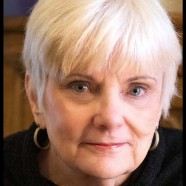
Setting aside the political landscape for a moment, it’s been a whirlwind of a month. There have been incidents that look like repeated examples of the same old challenges – the search for a permanent ceasefire in the Mideast, watching Ukraine struggle valiantly against Russian aggression, and what NOAA calls “an early and violent start” to the 2024 Atlantic hurricane season, illustrated by Hurricane Beryl and Tropical Storm Debby. These have been interspersed with newer infrastructure challenges like getting the two astronauts in the Boeing Starliner home from space and hardening obvious attack surfaces from aggressors, whether the victim is Microsoft, entire judicial districts, or the former president.
Against such an anxiety-producing swath of incidents and events, we have been marveling at the clarity of presentation of the 2024 Paris Olympics, where the city and its infrastructure have hosted thousands of athletes. Rather than build new structures to house all the events, officials temporarily adapted existing buildings, bridges, and historic public spaces. Housing built for the athletes will be repurposed. Thousands of volunteers and a heightened security protocol made the event a stirring success. Athletes and audiences alike still pay tribute to the Olympic flag and its five rings, introduced first by the organizer, Pierre de Coubertin, in 1913:
“These five rings represent the five parts of the world now won over to the cause of Olympism and ready to accept its fecund rivalries. What is more, the six colors thus combined reproduce those of all nations without exception.” (The five continents represented by the rings are Africa, Asia, the Americas, Europe and Oceana. The rings are interconnected as if to show the shared joy of athletic competition as well as the interconnection of the five continents.)
Whether we still characterize our five continents this way, with Europe occupying its own space, we can use the metaphor of the rings to look at long-term, high-stakes risks for our country, as well as practical steps that can be taken over the short-term to maintain global ties with our allies and to partner with them to find solutions that will benefit all of us. Climate change is the most obvious example of a partnership that can lead to a positive outcome, but so is the fragile set of interconnected treaties concerning the sharing of sensitive information with our partners or the commitment to control nuclear weapons.
When we layer the complexity of political campaigns into the incidents and events, we add an entirely new layer of hot spots to the model. We have another challenge here. Because we are so interconnected, spreading rumors and disinformation about those seeking public office is easy. The situation in this country has been made even more complex by the sophistication of artificial intelligence and technology, and it is often difficult to tell what the case is, what is true, and what is a “fake,” especially when some of the disinformation is coming from another nation-state and is designed to interfere with our elections.
The more fundamental problems, however, are questions of purpose and intent. The growing advancement of a distinction between misinformation (which may be ignorance or mistakes) and disinformation (which is known to be false but used to denigrate others or advance a lie) is useful. The Olympics made clear the primacy of empirical events in comparisons we can and do experience. In our interconnectedness, at all levels, our purposes need to be clear.
Originally Published in ASA News and Notes August 12, 2024









